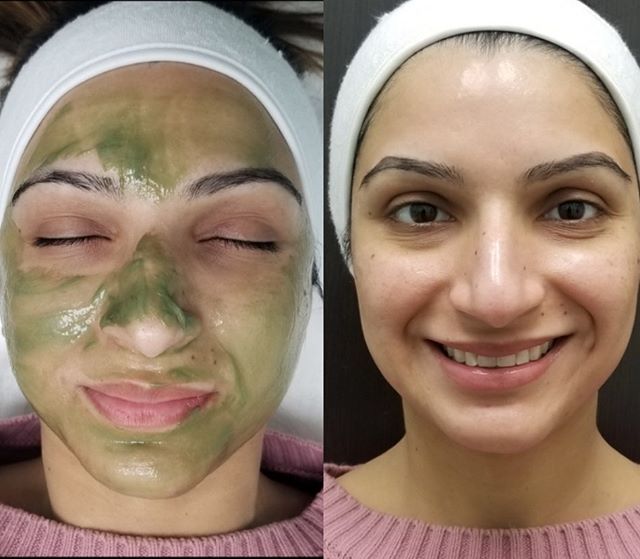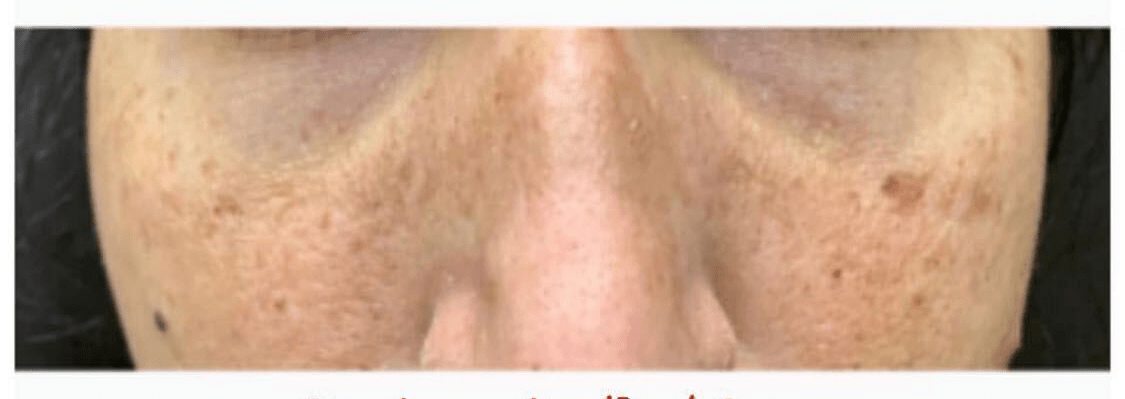Overview
A chemical peel is a procedure in which a chemical solution is applied to the skin to remove the top layers. The skin that grows back is smoother. With a light or medium peel, you may need to undergo the procedure more than once to get the desired results.
Chemical peels are used to treat wrinkles, discolored skin and scars — usually on the face. They can be done alone or combined with other cosmetic procedures. And they can be done at different depths, from light to deep. Deeper chemical peels offer more-dramatic results but also take longer to recover from.
Why it’s done
A chemical peel is a skin-resurfacing procedure. Depending on the issues you’re addressing with the procedure, you’ll choose a chemical peel in one of three depths:
- Light chemical peel. A light (superficial) chemical peel removes the outer layer of skin (epidermis). It’s used to treat fine wrinkles, acne, uneven skin tone and dryness. You might have a light peel every two to five weeks.
- Medium chemical peel. A medium chemical peel removes skin cells from the epidermis and from portions of the upper part of your middle layer of skin (dermis). It’s used to treat wrinkles, acne scars and uneven skin tone. You might need to repeat the procedure to achieve or maintain the desired result.
- Deep chemical peel. A deep chemical peel removes skin cells even deeper. Your doctor might recommend one for deeper wrinkles, scars or precancerous growths. You won’t need repeat procedures to get the full effect.
Chemical peels can’t remove deep scars or wrinkles or tighten sagging skin.
Risks
A chemical peel can cause various side effects, including:
- Redness, scabbing and swelling. Normal healing from a chemical peel involves redness of the treated skin. After a medium or deep chemical peel, redness might last for a few months.
- Scarring. Rarely, a chemical peel can cause scarring — typically on the lower part of the face. Antibiotics and steroid medications can be used to soften the appearance of these scars.
- Changes in skin color. A chemical peel can cause treated skin to become darker than normal (hyperpigmentation) or lighter than normal (hypopigmentation). Hyperpigmentation is more common after superficial peels, while hypopigmentation is more common after a deep peel. These problems are more common in people with skin of color and can sometimes be permanent.
- Infection. A chemical peel can lead to a bacterial, fungal or viral infection, such as a flare-up of the herpes virus — the virus that causes cold sores.
- Heart, kidney or liver damage. A deep chemical peel uses carbolic acid (phenol), which can damage heart muscle and cause the heart to beat irregularly. Phenol can also harm the kidneys and liver. To limit exposure to phenol, a deep chemical peel is done a portion at a time, in 10- to 20-minute intervals.
A chemical peel isn’t for everyone. Your doctor might caution against a chemical peel or certain types of chemical peels if you:
- Have taken the oral acne medication isotretinoin (Myorisan, Claravis, others) in the past six months
- Have a personal or family history of ridged areas caused by an overgrowth of scar tissue (keloids)
- Are pregnant
- Have frequent or severe outbreaks of cold sores
How you prepare
Choose a doctor with knowledge of the skin and procedure — a dermatologist or dermatologic surgeon. Results can be variable and depend on the expertise of the person doing the peel. Improperly done, a chemical peel can result in complications, including infection and permanent scars.
Before you have a chemical peel, your doctor will likely:
- Review your medical history. Be prepared to answer questions about current and past medical conditions and any medications you are taking or have taken recently, as well as any cosmetic procedures you’ve had.
- Do a physical exam. Your doctor will inspect your skin and the area to be treated to determine what type of peel you might benefit from most and how your physical features — for example, the tone and thickness of your skin — might affect your results.
- Discuss your expectations. Talk with your doctor about your motivations, expectations and potential risks. Make sure you understand how many treatments you might need, how long it’ll take to heal and what your results might be.
Before your peel, you might also need to:
- Take antiviral medication. Your doctor might prescribe an antiviral medication before and after treatment to help prevent a viral infection.
- Use a retinoid cream. Your doctor might recommend using a retinoid cream, such as tretinoin (Renova, Retin-A) for a few weeks before treatment to help with healing.
- Use a bleaching agent. Your doctor might recommend using a bleaching agent (hydroquinone), a retinoid cream, or both before or after the procedure to reduce the risk of side effects.
- Avoid unprotected sun exposure. Too much sun exposure before the procedure can cause permanent irregular pigmentation in treated areas. Discuss sun protection and acceptable sun exposure with your doctor.
- Avoid certain cosmetic treatments and certain types of hair removal. About a week before the peel, stop using hair removal techniques such as electrolysis or depilatories. Also, avoid hair dying treatments, permanent-wave or hair-straightening treatments, facial masks, or facial scrubs in the week before your peel. Don’t shave the areas that will be treated beginning 24 hours before your peel.
- Arrange for a ride home. If you’ll be sedated during the procedure, arrange for a ride home.
What you can expect
Before the procedure
A chemical peel is usually done at an office or in an outpatient surgical facility. Before the procedure, your doctor will clean your face, protect your hair, and cover your eyes with ointment, gauze, tape or goggles.
Pain relief isn’t typically needed for a light chemical peel. If you’re having a medium peel, you might receive a sedative and painkiller. For a deep peel, you might have a sedative, something to numb the treatment area and fluids delivered through a vein.
During the procedure
During a light chemical peel:
- Your doctor will use a brush, cotton ball, gauze or sponge to apply a chemical solution typically containing glycolic acid or salicylic acid. The treated skin will begin to whiten.
- You might feel mild stinging while the chemical solution is on your skin.
- Your doctor will apply a neutralizing solution or wash to remove the chemical solution from the treated skin.
During a medium chemical peel:
- Your doctor will use a cotton-tipped applicator or gauze to apply a chemical solution containing trichloroacetic acid, sometimes in combination with glycolic acid. The treated skin will begin to whiten.
- After a few minutes, your doctor will apply cool compresses to soothe treated skin. You might also be given a hand-held fan to cool your skin. No neutralizing solution is needed, however.
- You might feel stinging and burning for up to 20 minutes.
During a deep chemical peel:
- You’ll be given intravenous (IV) fluids, and your heart rate will be closely monitored.
- Your doctor will use a cotton-tipped applicator to apply carbolic acid (phenol) to your skin. Treated skin will begin to turn white or gray.
- To limit your exposure to phenol, your doctor will do the procedure in portions at about 15-minute intervals. A full-facial procedure might take about 90 minutes.
After the procedure
After a chemical peel of any depth, your skin will be red, tight, irritated or swollen. Follow your doctor’s directions for sun protection, cleansing, moisturizing and applying protective ointments to your skin. And avoid picking, rubbing or scratching your skin. It may take several months before your skin color returns to normal and you can see the full results of the peel.
After a light chemical peel, treated skin will be red, dry and mildly irritated — although these effects might be less noticeable with each repeat treatment. Your doctor might apply a protective ointment, such as petroleum jelly, to soothe the skin. You can usually wear makeup the next day if you wish.
Treated areas take about one to seven days to heal after a light chemical peel. New skin might temporarily be lighter or darker than normal.
After a medium chemical peel, treated skin will be red and swollen. You’ll feel stinging. Your doctor might apply a protective ointment, such as petroleum jelly, to soothe the area and prevent dryness. After five to seven days, you can use cosmetics to cover any redness.
Use ice packs for comfort. Over-the-counter pain-relieving medication, such as ibuprofen (Advil, Motrin IB, others) and naproxen sodium (Aleve, others), may help reduce any discomfort. You’ll likely schedule a checkup soon after your treatment so that your doctor can monitor your healing.
As swelling decreases, treated skin will begin to form a crust and might darken or develop brown blotches. Treated areas take about seven to 14 days to heal after a medium chemical peel, but redness might last for months.
After a deep chemical peel, you’ll experience severe redness and swelling. You’ll also feel burning and throbbing, and the swelling may even make your eyelids swell shut.
Your doctor will apply a surgical dressing to treated skin. He or she might also prescribe painkillers. You’ll need to soak the treated skin and apply ointment several times a day for about two weeks.
Treated areas will develop new skin within about two weeks after a deep chemical peel, although redness might last for months. Treated skin might become darker or lighter than normal or lose the ability to tan.
You might prefer to remain at home while you’re healing from a chemical peel. You’ll likely need several follow-up visits soon after your treatment so that your doctor can monitor your healing.
Once new skin completely covers the treated area in about two weeks, you can use cosmetics to conceal any redness. Use sunscreen every day.
Results
A light chemical peel improves skin texture and tone and lessens the appearance of fine wrinkles. The results are subtle but increase with repeated treatments. If you have a medium chemical peel, treated skin will be noticeably smoother. After a deep chemical peel, you’ll see a dramatic improvement in the look and feel of treated areas. Results may not be permanent. Over time, age and new sun damage can lead to new lines and skin color changes.
With all peels, the new skin is temporarily more sensitive to the sun. Talk with your doctor about how long to protect your skin from the sun.



 Pigmentation Improvement After 3 Chemical Peels
Welcome to Zaytuna Medical Spa, where taking care of your skin is our only priority. Located in the prestigious intersection of peel, Vaughan, Toronto, and Peel regions. we offer high-end skin treatments in a clean and cozy atmosphere. We take pride in creating highly customized treatments that are as unique as you. Our services include Medical-grade Facials, Photo Facial, Laser Hair Removal, Botox, Fillers, PRP, Hair Restoration Therapies, Microneedling, and Chemical Peel. Our professional, friendly team is ready to assist you with the most luxurious treatments in skincare.
Cependant, il y a une nuance: une corrélation similaire est affaiblissant au fil du temps et après 18 ans, la vie conjugale complètement. Alors ne laissez pas tomber les joueurs de basket, les modèles et Catherine Lisin (rappelez-vous que vous êtes la plus haute femme en Russie et le propriétaire des jambes les plus longues du monde)!
As a highly experienced Physician at Zaytuna Medical Spa, Dr.Sabha Cheema believes that healthy, glowing skin begins with exceptional care. Her experience proves that anyone can achieve healthy skin through proper advice, care, and customized treatments for your skin.
